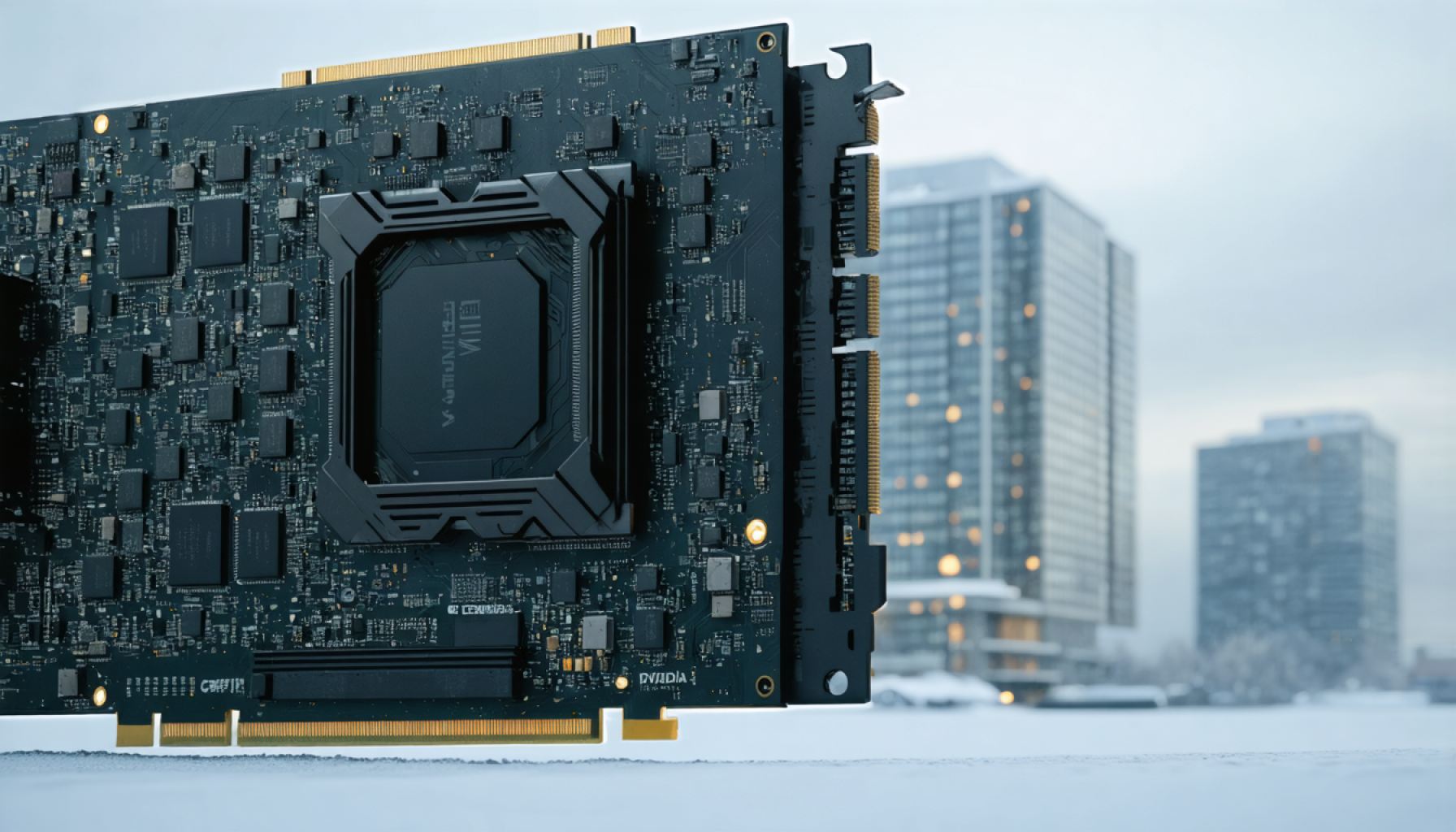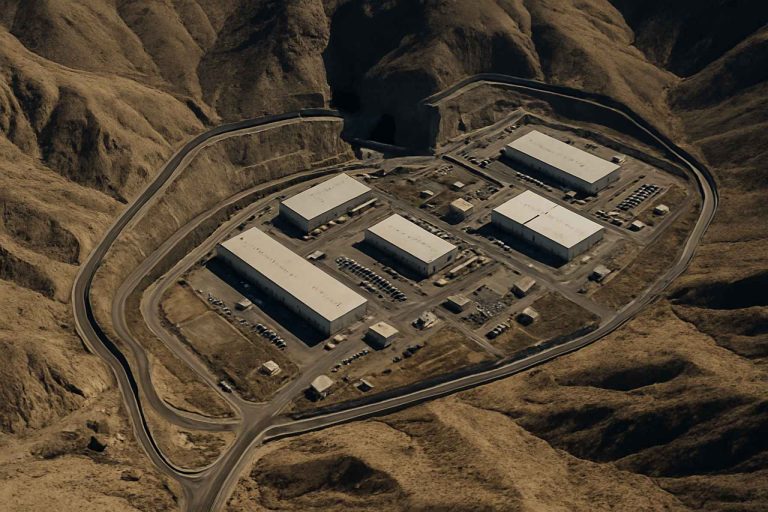
- Nvidia’s revenue soared from $4.7 billion to $130 billion over the past decade, illustrating profound growth fueled by innovation.
- The company’s GPUs dominate data centers, despite emerging competition and volatile market conditions.
- Nvidia’s Blackwell computing system launched with substantial success, earning $11 billion in quarterly revenue.
- The stock is attractively valued at 24 times this year’s earnings estimates, sparking interest among investors seeking growth opportunities.
- The potential for AI inferencing growth presents a significant opportunity for Nvidia, leveraging its cutting-edge technology.
- Geopolitical factors, such as tariffs and Chinese market dynamics, pose challenges, yet Nvidia remains a key player globally.
- Tech giants like Google and Amazon continue to rely on Nvidia’s GPUs for developing advanced technologies like AI and autonomous systems.
- Despite risks, Nvidia’s forward trajectory offers a compelling investment narrative driven by innovation and strategic positioning.
Nvidia, the titan of the graphics processing world, has captured the imagination and pockets of tech enthusiasts and professionals alike. With compelling products that have carved their place in both gaming and data center industries, this chipmaker’s journey has been nothing short of a digital odyssey. Its climb from a modest $4.7 billion annual revenue a decade ago to a staggering $130 billion in recent times is a testament to its prowess in innovation and strategic market positioning.
Yet, as meteoric as Nvidia’s rise has been, the road is not without its bumps. Investors recently hit pause, weighing the implications of tariffs and an emerging competitive landscape that threatens to scatter this stability. The first quarter of the year saw the stock slip by 19%, signaling a tug-of-war between robust demand forecasts and nagging doubts about near-term economic headwinds.
Despite this setback, Nvidia continues to hold the crown as the unrivaled GPU supplier to colossal data centers, with leading cloud service providers at its feet. The recent launch of the powerful Blackwell computing system, which netted $11 billion in revenue for the latest quarter, is a vivid image of momentum in full swing. The fervor is such that CEO Jensen Huang likened customer impatience to a dam ready to burst with anticipation, highlighting the insatiable demand for these cutting-edge systems.
The stock glistens with potential, trading at an alluring 24 times this year’s earnings estimates—well below its five-year average. Such valuation metrics often join forces with growth trends to paint a canvas of opportunity for discerning investors. Yet, competition is the lurking shadow, with some major players like OpenAI considering making their own chips, a step that could potentially unshackle them from Nvidia’s grasp.
However, Nvidia’s innovation engine doesn’t stall at mere whispers of competition. The speculated AI inferencing surge presents an arena where Nvidia’s tech-infused symphony could crescendo into next-level advancements. This leap requires unprecedented processing power, and Nvidia’s Blackwell strides confidently into this future, tailored for the task.
Circumstances in economic and geopolitical theaters, like tariffs, could drizzle uncertainty on Nvidia’s parade. The watchful eyes of investors must also factor in shifting sands in China’s market, where restrictions have dampened chip sales. Yet, China remains just a fragment of the global mosaic that Nvidia paints.
In this intricately woven tale, the giants Google and Amazon, while dabbling with creating their own chips, still engage Nvidia’s powerful GPUs, essential for developing the next generation of technologies such as AI models and autonomous machines.
The evidence, the prospects, and the competitive soul of Nvidia whisper a resounding message: the company’s growth is poised to continue its dance upwards. Undoubtedly, risks lurk in the shadows, but the current valuation story offers a compelling argument for those keen to participate in the narrative. For investors, Nvidia represents a mosaic of potential—an invitation to gaze beyond the immediate chaos, and perhaps bet on its luminous future.
Nvidia’s Meteoric Rise and the Future of AI: What Investors Need to Know
Nvidia, a venerated leader in the world of graphics processing, continues to shape industries with innovations that transcend gaming and data centers, leaping into the realm of AI and supercomputing. As Nvidia scales new heights in annual revenues, reaching an impressive $130 billion, the company navigates both unprecedented opportunities and emerging challenges.
How Nvidia is Shaping the Future of Technology
1. AI and Data Center Dominance:
Nvidia’s robust GPU solutions remain indispensable across data centers globally. The company’s advancements in AI processing are underscored by the release of the Blackwell computing system, a flagship product generating substantial revenue and demand.
2. Economies of Scale and Market Positioning:
Trading at 24 times this year’s earnings estimates, Nvidia’s valuation is attractive compared to its five-year average. This offers investors a promising landscape of growth, especially amid surging demands in AI and computational technology.
3. Competitor Pressures and Market Challenges:
While Nvidia revels in dominance, companies like OpenAI and tech giants such as Google and Amazon experiment with building custom chips. However, Nvidia’s advanced GPUs are still integral to futuristic technologies like AI models and autonomous systems.
Emerging Opportunities and Industry Trends
AI and Machine Learning Boom:
According to market trends, the demand for AI processing capabilities is predicted to skyrocket, with Nvidia poised to capture a significant share. AI inferencing requires exceptional computing power—ground Nvidia is well-equipped to cover with its specialized chips.
Geopolitical and Economic Influences:
Trade tariffs and geopolitical shifts, particularly in markets like China, bear on Nvidia’s prospects. Therefore, diversifying supply chains and market bases could mitigate risk while unlocking new avenues for growth.
Real-World Use Cases and Industry Impact
Autonomous Technology:
Nvidia chips power various autonomous applications, ranging from self-driving vehicles to smart cities, demonstrating the ubiquitous influence of their technology.
Gaming Industry Evolution:
Despite the exploration into AI and data centers, gaming remains a core market for Nvidia. The company’s graphics cards are key to immersive gaming experiences, supporting trends such as virtual reality and augmented reality.
Strategic Recommendations for Investors
Diversification and Long-Term Holding:
Investors might consider Nvidia as a long-term investment opportunity, given its strategic positioning in AI and gaming. Diversifying investments across technological sectors may hedge against specific market volatilities.
Monitoring Technological Advances and Partnerships:
Staying abreast with Nvidia’s advancements and partnerships, especially in AI, may offer insights into future profitability and market share expansion.
Pros & Cons Overview
Pros:
– Industry-leading innovation, particularly in AI and gaming.
– Strong revenue growth and valuation potential.
Cons:
– Competitive threats from new market entrants.
– Vulnerability to geopolitical and economic conditions affecting the semiconductor industry.
Conclusion and Quick Tips
Nvidia remains a pivotal player in the tech universe, continually catalyzing advancements that drive industrial innovation. For investors and tech enthusiasts alike, leveraging Nvidia’s growing influence in AI offers substantial potential for growth. Stay updated on the company’s technological strides and consider the broader geopolitical and economic landscape when making investment decisions.
For further insights into Nvidia’s groundbreaking technologies and market influence, visit their official website.



